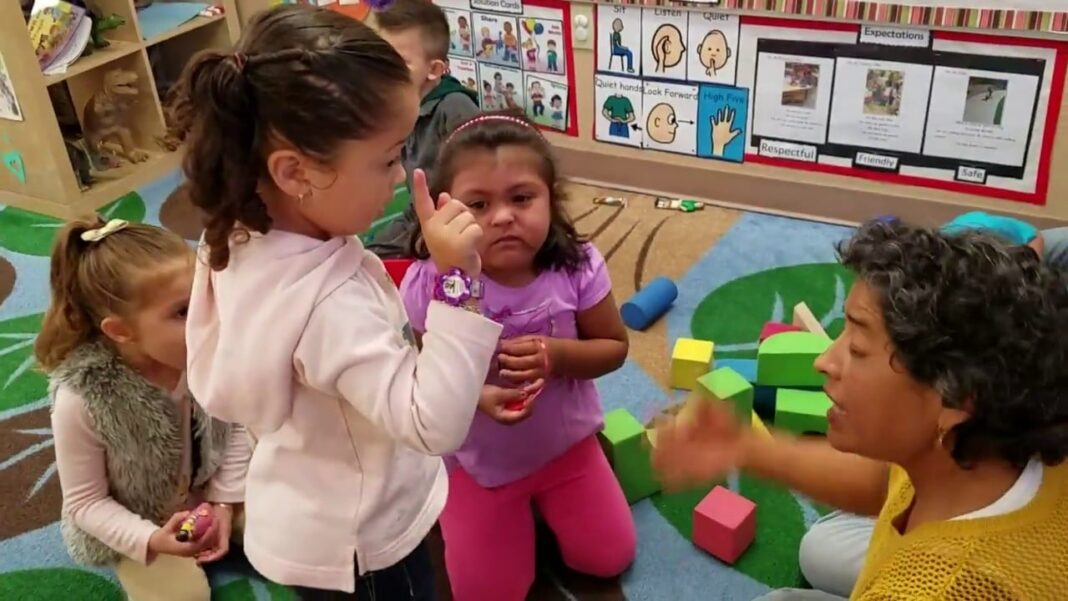Battles between children are usually caused by: ·
a ruined cube tower that someone else has built; ·
toys, play paraphernalia and other things that children have not been able to share or that one child takes from another; ·
different views of children on the choice of joint play, game situations, characters, their actions, distribution of roles; ·
disputes about the correctness of the game actions. Preventing conflicts between children The causes of conflict situations depend on age. At the age of 2-3, children most often quarrel over toys that cannot be shared and broken structures. At this age, children go through the next stage of personality formation – for a while they become ardent owners and very severely encroach on “their” things. At the same time, children still do not know how to fully express their emotions in words. Therefore, conflicts are usually resolved with the help of physical force, crying and adult participation. By the age of 4-5, children in kindergarten begin to interact more actively with each other. Disputes over the choice of joint games, the desire or unwillingness to play together come to the fore. In preschool, the causes of conflict become even more diverse – children may have different views on the rules of the game, the distribution of roles and the behavior of players. Which children are most prone to conflict in kindergarten? In every preschool there are children who have or because of whom conflict situations most often arise. They may have different behaviors: ·
Aggressive – irritated when not listened to, harassed others. ·
Complainant – always finds a reason for dissatisfaction and expresses it. ·
Silent – calm, speaks little, so it is difficult for other children and the teacher to understand what he wants. ·
Too responsive – agrees with everyone. ·
Omniscient – believes that only he knows how and what to do. ·
Indecisive – makes decisions for a long time, is afraid of mistakes.
Maximalist – wants everything right now. ·
Secret – hides complaints and can take revenge on the offender when he has forgotten about his bad behavior. ·
Liar – spreads false or unverified information, transfers his evil deeds to others.
Children who cause conflicts in preschool seek to communicate with their peers, but do not know how to do so due to the peculiarities of their character and upbringing. Many of them try to establish themselves in the team with the help of disputes and quarrels. The educator must explain to the children that in communicating with others they must be able to negotiate, express their point of view and listen to others. What must be done:
1. Create rules of behavior in the group: do not quarrel, do not use offensive nicknames, do not take toys from each other, ask permission if you want to take something from someone else, etc. 2. Talk about real or imagined conflict situations, encouraging children to analyze – ask what caused the quarrel, how they would feel in the place of each participant, how to reconcile the warring parties.
3. Organize games that show examples of right and wrong behavior in conflict situations. 4. Encourage children who are trying to create conflicts to behave properly.
5. Explain to the children that any contentious situation can be resolved through compromise. How to resolve a children’s conflict in kindergarten, if it has arisen?
Not all conflict situations between children require the intervention of adults. Small battles are usually decided by themselves. They are extremely important for socialization, teach children to resolve conflicts on their own, the ability to find a compromise. If the conflict is serious, the teacher should not just call the children to order. He must become a mediator in a dispute:
find a compromise that will satisfy all parties to the conflict;
partial or complete elimination of the cause of the quarrel;
changing the goals of the conflict;
to reach an agreement on a contentious issue.









